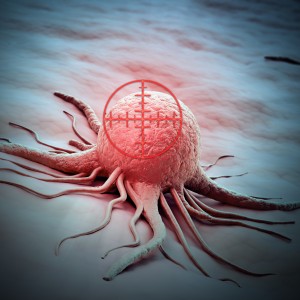 A multidisciplinary team at Dartmouth College recently established a method to selectively target breast and ovarian cancer cells using nanoparticles with therapeutic applications. The findings were published in the International Journal of Nanomedicine and the study is entitled “Antibody-mediated targeting of iron oxide nanoparticles to the Folate receptor alpha increases tumor cell association in vitro and in vivo.”
A multidisciplinary team at Dartmouth College recently established a method to selectively target breast and ovarian cancer cells using nanoparticles with therapeutic applications. The findings were published in the International Journal of Nanomedicine and the study is entitled “Antibody-mediated targeting of iron oxide nanoparticles to the Folate receptor alpha increases tumor cell association in vitro and in vivo.”
Nanotechnology has allowed advances in the detection and treatment of cancer. Iron oxide nanoparticles in particular were one of the first nanomaterials applied in the field of oncology. These iron oxide nanoparticles have magnetic properties and have been applied in medical diagnosis and therapies. To be effective, however, the nanomaterials have to be selectively guided to tumors and cancer cells.
“The ultimate utility of anti-cancer nanoparticle technologies will depend in large part on their capacity to selectively home to cancer cells,” explained the study’s lead author Dr. Karl E. Griswold in a news release. “Achieving optimal targeting of nanoparticles in clinically relevant scenarios remains a key challenge for researchers in this space.”
The environment within the body is extremely complex and several factors can influence the distribution and cellular targeting of nanoparticles. Features like nanoparticle composition and size, surface chemistry, molecular targeting, route of nanoparticle administration, cancer cell type and location of the tumor can all influence the targeting of nanoparticles to tumors.
In order to design and thoroughly validate functional nanomaterials, the research team conducted a systematic study of the factors that can influence cellular targeting and distribution of nanoparticles using models of two important human cancers — breast and ovarian.
[adrotate group=”3″]
Researchers found that iron oxide nanoparticles, whose molecular targeting is mediated through antibodies, can accumulate in cancer tissues upon systemic administration, while non-targeted nanoparticles are unable to target cancer tissues. Moreover, besides guiding the nanoparticles to tumor masses, molecular targeting also resulted in nanoparticle internalization by the cancer cells.
“This ability to accumulate iron oxide nanoparticles within cancerous cells following systemic administration has important implications for diagnostic and therapeutic applications of this particular type of magnetic nanomaterial,” noted Dr. Griswold.
The research team is currently in the final stages of the development, synthesis and characterization process of more sophisticated iron oxide nanoparticles, which are more efficient in targeting the several surface markers found in tumor microenvironments.
“In studying cancer at Dartmouth, we are committed to team science, (…) Solutions to problems like these require transdisciplinary collaborations operating at the complex interfaces between molecular biotechnology, nanotechnology, biology, and medicine,” concluded Dr. Griswold.

